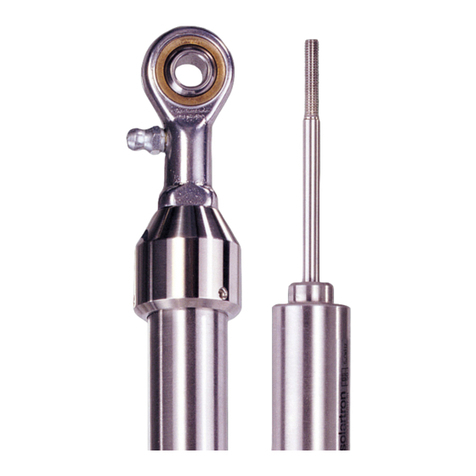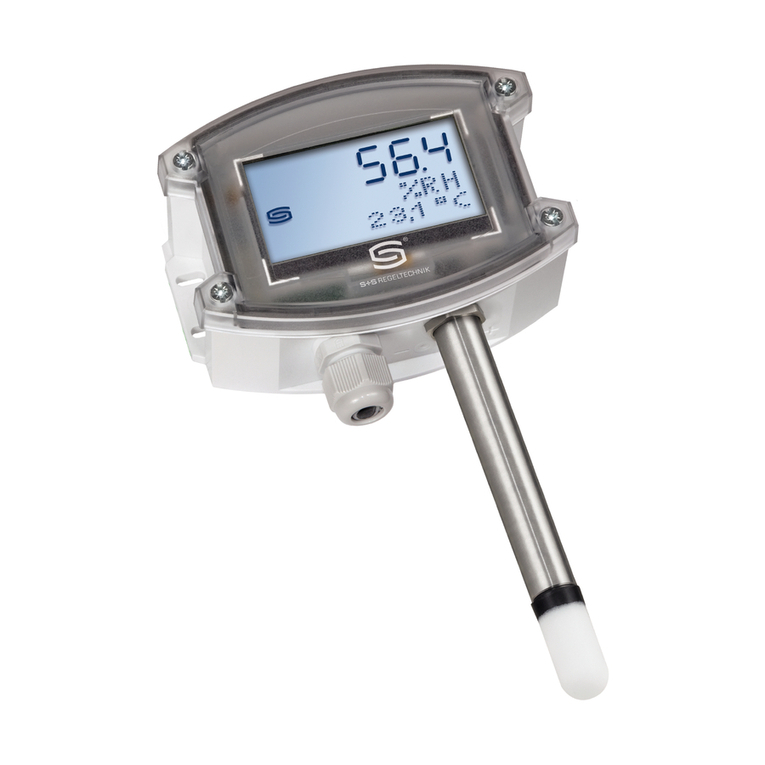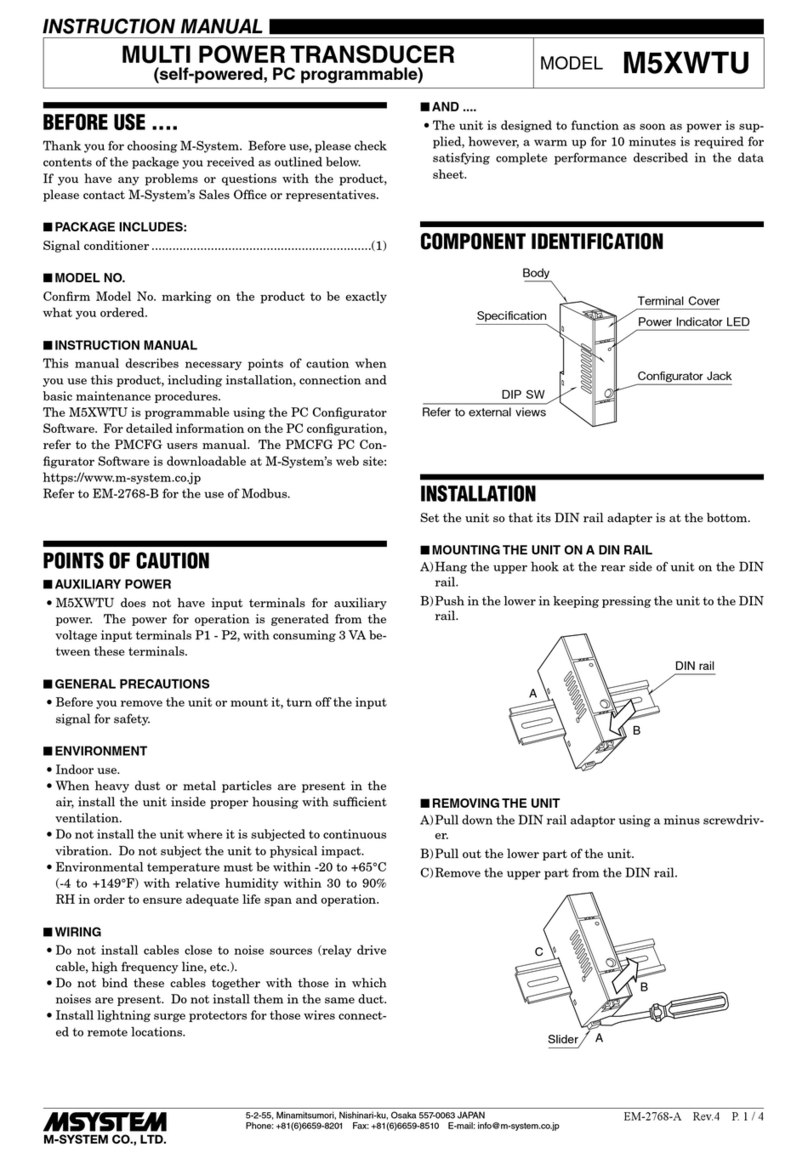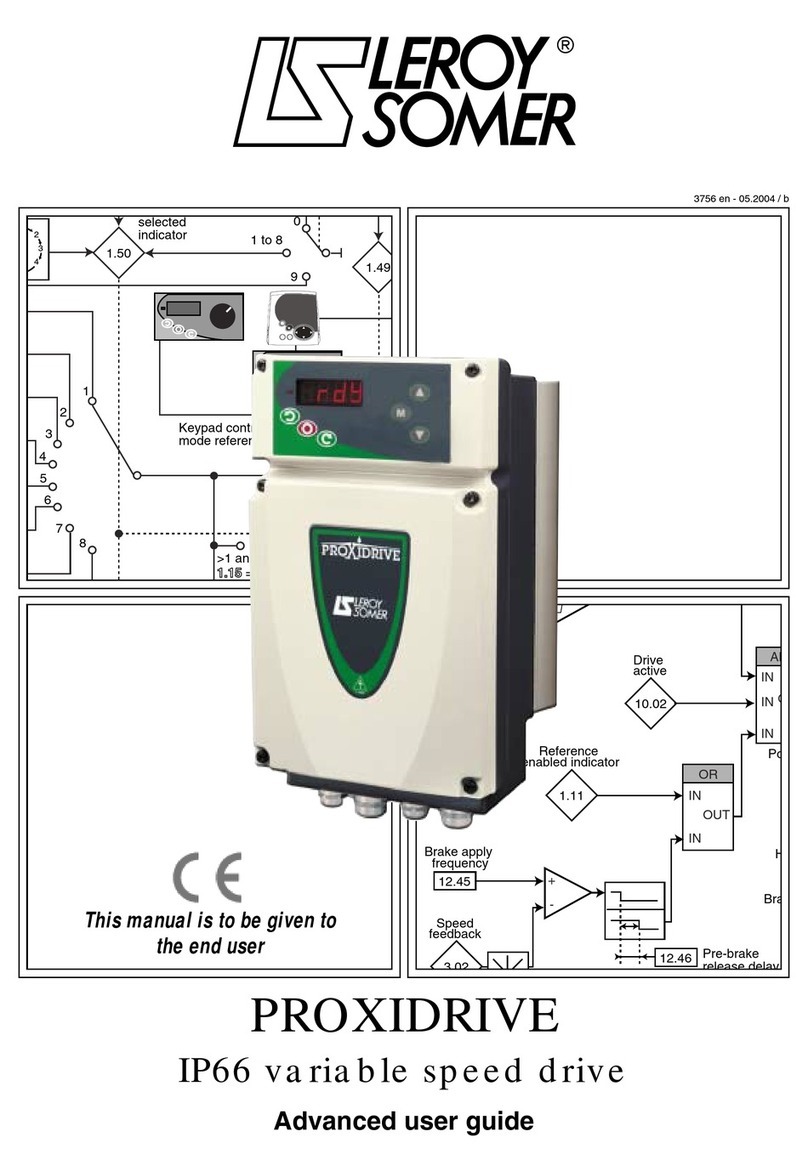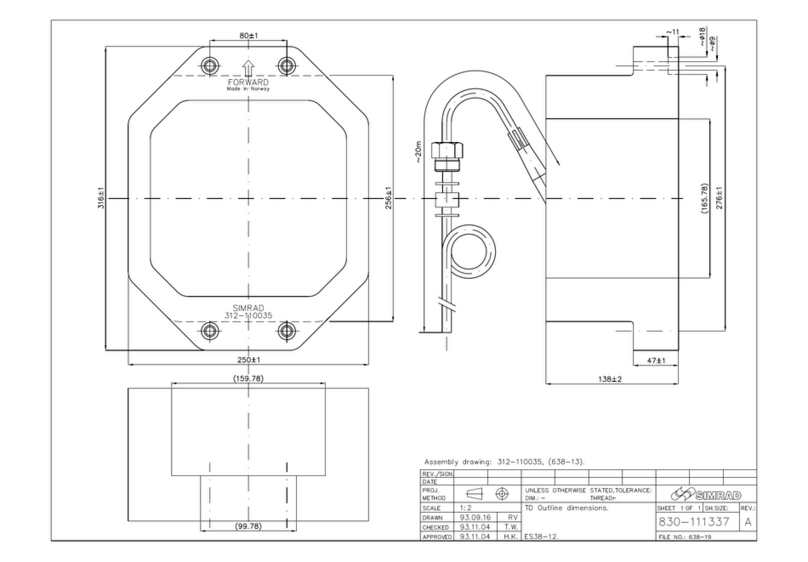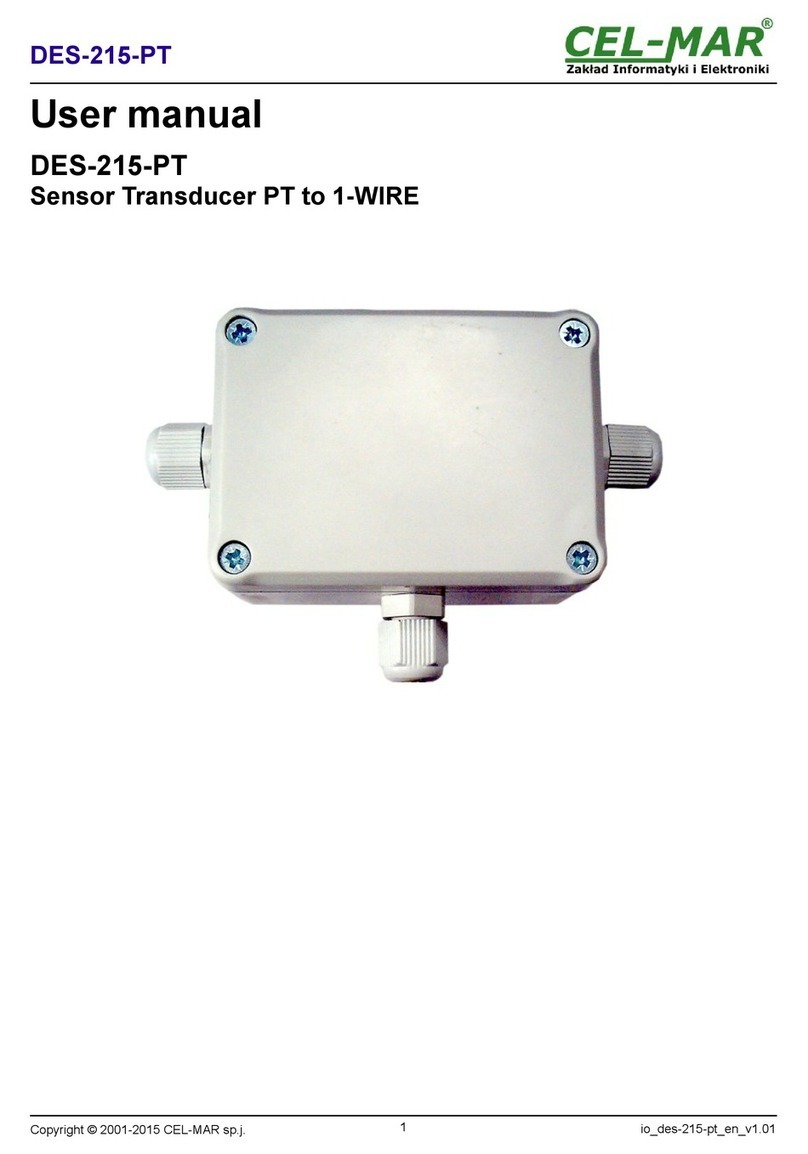Solartron Metrology OD4 User manual

PRODUCT NAME
user manual
Product Type
OD4
user manual
Conditioning Module

1.0 Index
Part No. 502621 Issue 10
2
Section Title Page
1.0 Index . . . . . . . . . . . . . . . . . . . . . . 2
2.0 Safety Information . . . . . . . . . . . . 3
3.0 Introduction . . . . . . . . . . . . . . . . . 5
3.1 OD4 Mk2 Enhancements . . . . . . . 5
4.0 Installation . . . . . . . . . . . . . . . . . . 6
4.1 Mounting . . . . . . . . . . . . . . . . . . . 6
4.2 Operational Environment . . . . . . . 7
4.2.1 Residential, Commercial & Light
Industrial Environments . . . . . . . . 7
4.2.2 Industrial Environments . . . . . . . 7
4.3 Electrical Connections . . . . . . . . 8
4.4 Connecting the Transducer . . . . . 9
4.5 Connecting the Power Supply . . . 11
4.6 Connecting the Signal Out . . . . . . 11
Section Title Page
4.6.1 Voltage Connections . . . . . . . . . . 11
4.6.2 Current Connections . . . . . . . . . . 12
4.7 Using an EMC Cable Gland . . . . . 13
5.0 Setting up the Transducer and OD4 . 14
5.1 Option Links Explained . . . . . . . . . . . 15
5.2 Basic Procedure . . . . . . . . . . . . . . . . 17
5.3 Sensitivity and the X2, X4,DIV2 Links . 21
6.0 Half-Bridge Version . . . . . . . . . . . . . . 22
7.0 Specifications . . . . . . . . . . . . . . . . . . 22
7.1 Electrical . . . . . . . . . . . . . . . . . . . . . . 23
7.2 Mechanical and Connections . . . . . . 25
7.3 Environmental . . . . . . . . . . . . . . . . . 25
7.4 Notes . . . . . . . . . . . . . . . . . . . . . . . 26
Return Of Goods
Solartron Sales Offices
1.0 Index

Part No. 502621 Issue 10
3
2.0: Safety Information
2.0: Safety Information
Terms in this Manual
WARNING statements identify conditions
or practices that could result in personal injury
or loss of life.
CAUTION statements identify conditions
or practices that could result in damage to the
equipment or other property.
Symbols in this manual
This symbol indicates where applicable
cautionary or other information is to be
found.
WARNINGS:
Do not operate in an explosive atmosphere
To avoid explosion, do not operate this
equipment in an explosive atmosphere.
Safety Critical Environments
This equipment is not intended for use
in a safety critical environment."
CAUTION:
Low Voltage
This equipment operates at below the SELV and
is therefore outside the scope of the Low Voltage
Directive.
This equipment is designed to work from
a low voltage DC supply. Do not operate this
equipment outside of specification.

Part No. 502621 Issue 10
4
2.0: Safety Information
2.0: Safety Information
CAUTION:
Electrostatic Discharge
This equipment is susceptible to ESD (Electrostatic
Discharge) when being installed or adjusted, or
whenever the case cover is removed. To prevent
ESD related damage, handle the conditioning
electronics by its case and do not touch the
connector pins. During installation, follow the
guidelines below.
• Ensure all power supplies are turned off
• If possible, wear an ESD strap connected to
ground. If this is not possible, discharge yourself
by touching a metal part of the equipment into
which the conditioning electronics is being
installed.
• Connect the transducer and power supplies
with the power switched off.
• Ensure any tools used are discharged by
contacting them against a metal part of the
equipment into which the conditioning electronics
is being installed.
• During setting up of the conditioning electronics,
make link configuration changes with the power
supply turned off. Avoid touching any other
components.
• Make the final gain and offset potentiometer
adjustments, with power applied, using an
appropriate potentiometer adjustment tool
or a small insulated screwdriver.

Part No. 502621 Issue 10
5
3.0: Introduction
3.0: Introduction
The OD4 MK2 is a development of the original OD4.
It is a compact conditioning module powered from
a single DC supply. Adjustable gain and zero
controls are provided for use with the complete
range of Solartron LVDT and half-bridge
transducers.* The unit is of robust construction,
housed in a die cast aluminium box providing
a substantial degree of mechanical protection.
The OD4 MK2 incorporates its own voltage
regulation for operation from 10-30 VDC and
can provide outputs of up to ±10 V together
with ±20 mA.
3.1: OD4 MK2 Enhancements
The OD4 MK2 has been designed as a form, fit and
function replacement for the original OD4, but with
several enhancements.
• Wider gain range, allowing ALL Solartron
transducers to be connected without the need
for attenuation resistors.
• Up to ±10 V dc and ±20 mA are available
for all gain settings.
• Fixed and variable offsets make setting of uni-
polar output easier.
• Gain and offset adjustment are fully
independent.
• Selectable transducer excitation frequency.
• Selectable transducer load resistances.
• Selection between forward and reverse
connection.
• Fully CE Compliant.
• Half-Bridge transducers can now be
accommodated with simple plug wiring
changes.*
* For half-bridge only variant see section 6.0.

Part No. 502621 Issue 10
6
4.0: Installation
4.0: Installation
4.1: Mounting
The OD4 may be mounted in a variety of ways and
in any attitude. Ensure that there is enough space
for the cover to be removed to allow for internal
adjustments. Space should also be allowed for the
transducer connector, EMC glands (if fitted) and
cabling. It is recommended that the OD4 case
be connected to earth or chassis.
Underside Mounting
Top-Side Mounting
Note: If replacing OD4
MKI a retrofit mounting kit
is available if repositioning
holes is not possible.
This earth connection is not a safety earth, but
is part of the overall electrical screening scheme.

Part No. 502621 Issue 10
7
4.0: Installation (continued)
4.0: Installation (continued)
4.2: Operational Environment
This section discusses the type of installation
required depending on the electrical environment.
4.2.1: Residential, Commercial and Light
Industrial Environments
Typically, this will be an office, laboratory
or industrial environment where there is no
equipment likely to produce high levels of electrical
interference, such as welders or machine tools.
Connections may be made using twisted,
unscreened wire. This is a cost effective option and
will give good performance in this environment.
Standard equipment wire such as 7/0.2 (24 AWG)
can be twisted together as required. Standard data
cable such as generic CAT5 UTP will also give good
performance.
4.2.2: Industrial Environments
Typically, this will be an industrial environment
where there is equipment likely to produce high
levels of electrical interference, such as welders,
machine tools, cutting and stamping machines.
Connections should be made using screened cable.
Braided or foil screened cables may be used. The
cable screen should be connected to the OD4 case
at cable entry point. The case of the OD4 should be
connected to a local ground. An EMC cable gland is
recommended.
This is supplied with the OD4.
When selecting the type of wire or cable to be used,
consider the following parameters:
• Screening.
Conductor size (resistance).
Mechanical aspects such as flexibility
and robustness.
This is not a complete list. Installations may require
other special cable characteristics.

Part No. 502621 Issue 10
8
4.0: Installation (continued)
4.0: Installation (continued)
4.3: Electrical Connections
The OD4 requires three connections.
1. Transducer.
2. Power Supply.
3. Output Signal, Voltage or Current.
A small hole should be made in the grommet prior
to passing the wires through. If a screened cable
is to be used, an EMC cable gland is recommended
(see section 4.7).
For best performance in electrically noisy
environments, the case of the OD4 should be
connected to a local earth. This can be achieved
via the mounting bracket. This earth connection is
not a safety earth, but is part of the overall electrical
screening scheme.
The wiring layout arrangements are similar for OD4
fitted with EMC glands and screened cable.
Separate Power Supply and Signal Out wires
Power Supply and Signal Out wires from
one end only
Connections to the power supply should be
routed to one side as shown. This helps to reduce
interference between power supply wires and the
more sensitive parts of the circuitry.
A technical note explaining good practice
for cable installation and routing can be
downloaded from www.solartronmetrology.com
Tran sdu cer
0V +V E
V O UT 0V I O U T
CO A R S E G A IN
1 2 3 4 5 6 (7)
FI N E G A IN
CO A R S E
OF F S E T
-V E
+V E
5V
2.5 V
FI N E O F F S E T
10 K
2K
- -
¦
R
¦
|F |
- -
DI V 2
X2
(X 4 )
G B K W B R
LO
HI
S ig n a l O u t
P o w e r S u pp ly
Transd u cer
0V +V E
V O U T 0V I O U T
CO A R S E G A IN
1 2 3 4 5 6 (7 )
FI N E G A IN
CO A R S E
OF F S E T
-V E
+V E
5V
2.5 V
FI N E O F F S E T
10 K
2K
- -
¦
R
¦
|F |
- -
DI V 2
X2
(X 4 )
G BK W B R
LO
HI
S ig n a l O u t
P o w e r S u p ply

Part No. 502621 Issue 10
9
4.0: Installation (continued)
4.0: Installation (continued)
4.4: Connecting the Transducer
Transducers fitted with a 5-pin DIN plug are simply
screwed into the case mounted socket. Transducers
not fitted with a plug should be wired to the plug
supplied.
C O R E
P rim a ry
R e d
Blue
Ve
G re en
Yellow
W hite
V
V
A
B
C e ntre T a p
V
O
M e asu re d
O u tp ut
R e d
B lu e
Yello w
+
-
C a se
L V D T
C a b le S cre e n
B la c k
C a se
P lu g vie w
in to p ins
S ta n da rd L V D T G a u g in g P ro b e P l ug C o n n ec tio n s
N o te 1 : + indic a te s inw ard m ove m ent o f the tip.
N o te 2 : Th e tra n sducer body m a y be dis connected from th e c a b le sc re e n b y
cu tting the b la ck wire in side th e c o n n e ctor
3
4
5
2
1
G re en
W hite
LVDT Electrical Connections
Red and Blue Energising
Green and White Signal
Yellow Secondary Centre Tap
Red and White In Phase for Inward
Displacement
Black Transducer Body Ground

Part No. 502621 Issue 10
10
4.0: Installation (continued)
4.0: Installation (continued)
C O R E
Blue
Yellow
R e d
V
V
A
B
C e ntre T a p
V
O
R e d
B lu e
Yello w
+
-
C a se
H a lf- B rid ge
C a b le S c re e n
B la c k
C a se
P lu g v ie w
in to pin s
S ta n da rd H a lf-B r id g e G a u g in g P r ob e P lu g C o n n ec tio n s
N o te 1 : + in d icates in w ard m o vem e n t of the tip .
N o te 2 : The transducer bod y m ay be d is co n n e c te d fro m th e cab le sc re e n by
cu ttin g the black wire in s ide the conne ctor
4 2
1
3
5
L IN K
Half-Bridge Electrical Connections
Red and Blue Energising
Green and White Signal
Yellow In Phase for Inward
Displacement
Red and Yellow In Phase for Inward
Displacement
Black Transducer Body Ground

Part No. 502621 Issue 10
11
4.0: Installation (continued)
4.0: Installation (continued)
4.5: Connecting the Power Supply
The OD4 requires a dc power supply in the range
10-30 V. A fully regulated supply is not required,
but the voltage at the input to the OD4 must remain
within specification. Ideally, the 0 V at the power
supply should not be connected to earth or the
chassis, as this would result in ground loops being
formed. The 0V supply, 0V signal and case are all
internally connected together at the OD4.
4.6: Connecting the Signal Out
The output signal may be voltage or current.
4.6.1: Voltage Connections
Voltage can easily be monitored using a variety of
instrumentation such as voltmeters. Voltage drops
along wires contribute to measurement errors, so
care must be taken when using long cable lengths
(100 m for example). High impedance instruments
are more prone to interference.
The signal 0V should always be used as reference.
If power supply 0V is used, then error voltages may
be introduced.
P o w er S u p pl y
0V
+ 10 -3 0 V 0V
+ V E
0V
V o u t
Io ut
P ro c e s s M o n it or
+
-
V o lta g e

Section 0
Part No. 502621 Issue 10
12
4.0: Installation (continued)
4.6.2: Current Connections
Current output requires the use of purposely
designed current input instrumentation. Current
output is more suitable for transmitting over longer
distances because current is not lost due to wiring
resistance. Additionally, with a low impedance, a
current loop is less likely to pick up noise.
The total loop resistance (resistance of measuring
equipment and wiring)
must not exceed specification.
Note: The OD4 is not loop-powered, so a power
supply must not be used in-line with the current
output.
4.0: Installation (continued)

Part No. 502621 Issue 10
13
Screen
125 mm
30 mm 10-15 mm
4.0: Installation (continued)
4.0: Installation (continued)
4.7: Using an EMC Cable Gland
To ensure the cable screen is properly connected to
the OD4 case, an EMC cable gland should be used.
This is supplied as an optional extra. The diagrams
below assume a single 4-way cable is being used.
Remove the grommet and fit the cable gland as
shown below.
- Prepare cable as shown.
- Slide the Dome nut, sealing ring and plastic
insert over cable.
- Fold and roll the screen back over itself
to form a lump.
Rolled Back
Screen
Dome Nut
Sealing
Ring
Plastic Insert Gland Body
Case Wall
Rotate Gland Body to
Tighten
- Push cable into gland body, followed by the plastic
insert (ensure anti-rotation slots engage), sealing
ring and dome nut.
- Ensure all components are properly seated before
tightening the dome nut.

Part No. 502621 Issue 10
14
5.0: Setting up the Transducer
and OD4
5.0: Setting up the Transducer and OD4
The OD4 may be set-up with output signals
anywhere within a ±10 VDC or ±20 mA range.
Typical outputs are ±10 VDC, ±5 VDC, 0-10 VDC
and 4-20 mA. These procedures apply to voltage
and current output.
Voltage and current output are available at the same
time, although they cannot be individually adjusted.
Either voltage or current should be chosen as the
calibration reference.
All outputs use 0V signal as the signal reference.
A list of standard link settings is available,
see section 5.2.
CAUTION:
During installation and adjustment, the
top of the enclosure has to be removed
for access to user adjustments. At this time,
standard ESD handling precautions for
electronic equipment should be followed.

15 Part No. 502621 Issue 10
5.0: Setting up the Transducer
and OD4 (continued)
5.0: Setting up the Transducer and OD4 (continued)
5.1: Option Links - Explained
The table below and subsequent diagrams explain the link functions and show the factory setting.
Link Description Options Standard Setting
Course Gain Sets the basic gain 1 link on Positron 1 to 6 Link ON Position 1
Fine Gain Adjustment between course gain ranges Potentiometer Adjustment Mid Position
Course Offset Shifts the output by a fixed amount Link ON -VE or +VE and Link ON 5 V or 10 V No
offset - Link Parked
No offset - Links Parked
Fine Offset Fine trim around any fixed offset Potentiometer Adjustment Mid Position
(7) Null Used during set-up to null output ON, OFF OFF
Freq. Selects transducer primary frequency Lo - ON, Hi - Parked Hi Freq. - Link Parked
Input Resistance Sets transducer secondary load 100 KΩParked, 10 KΩ- ON, 2 KΩ- ON 100 KΩ- Link Parked
Polarity (FR) Enables output signal direction change 2 Links across Forward or Reverse F Position
- 2 Link ON
Input Gain Input Gain of x1, x2, x4 or divide 2 X1 - Parked, X2 - ON, X4 - ON, DIV2 - ON Link parked on X2
L in k O N L in k P A R K E D Lin k O F F
0 V + V E
V O U T 0 V I O U T
C O A R S E G A IN
F IN E G A IN
C O A R S E
O F FS E T
-V E
+VE
5V
10V
F IN E O F F S E T
10K
2K
- -
¦
R
¦
|F |
- -
D IV 2
X2
X4
G B K W R B
O U T P U T
P O W E R
1 2 3 4 5 6 (7 )
F R E Q
LO
(O N )
H I
(O F F )
N U L L

Part No. 502621 Issue 10
16
5.0: Setting up the Transducer
and OD4 (continued)
5.0: Setting up the Transducer and OD4 (continued)
5.2: Basic Procedure
To set-up the OD4, some basic steps should
be followed.
The following steps describe a typical setting
procedure and applies to most applications.
Other procedures may be used as appropriate.
For a bi-polar output i.e. ±10 VDC or ±20 mA,
follow steps 1 to 3. For a uni-polar output i.e.
0-10 V, 0-20 mA or 4-20 mA, follow steps 1 to 4.
In either case, step 5 (final checks) should be
followed on the completion of the set-up.
Ze ro
-5V + 5 V
N u ll
elec tro n ic s
transd u cer
N u ll
Ze ro
transd u cer
elec tro n ic s
N u ll
+5 V0V + 1 0V
elec tro n ic s
transd u cer
S h ift
zero
V/V
±V
Hz
KΩ
Step 1
Set-up OD4
links
Step 2
Align OD4 and
Transducer Null
Step 3
Set OD4 and
Transducer Range
Step 5
Final Checks
Step 4
Add Offset
if Required

Part No. 502621 Issue 10
17
5.0: Setting up the Transducer
and OD4 (continued)
5.0: Setting up the Transducer and OD4 (continued)
5.2: Basic Procedure (continued)
STEP 1 - Set-up OD4 Links
If the transducer characteristics are known,
set the frequency and input resistance links
as required. A list of standard settings for all
Solartron transducers is available from www.
solartronmetrology.com. If the transducer
characteristics are not known, the standard link
settings should be used.
If your transducer is known to be outside of the
standard sensitivity range, the X2 or DIV2 links will
have to be used. See section 5.3.
STEP 2 - Align OD4 Null and Transducer Null
Any electrical offset in the OD4 is removed. The
transducer position is adjusted so that transducer
and OD4 nulls are aligned.
Null the OD4.
1. Put the Gain link on position (7) as shown.
This allows any electronics offset in the output
stage to be removed.
2 Adjust the Fine Offset control to give as near
to zero output as practical.
1 2 3 4 5 6 (7)
F R E Q
LO
(O N )
H I
(O F F)
N U L L

Part No. 502621 Issue 10
18
5.0: Setting up the Transducer
and OD4 (continued)
5.0: Setting up the Transducer and OD4 (continued)
5.2: Basic Procedure (continued)
Null the transducer.
1. Replace the Gain link to the original position.
2. Adjust the position of the transducer to give as
near
to zero output as practical.
This is the centre of the mechanical range.
If the transducer cannot be centered for practical
reasons an offset will remain within the system.
There may be noticeable interaction between Gain
and Offset adjustment. This does not prevent the
OD4 being set-up. However several iterations
may be required when adjusting Gain and Offset.
Please contact your supplier if guidance is
required.
STEP 3 - Setting Bi-Polar Full-scale Output
1. Move the transducer to the position where
maximum OD4 output is required.
2. If the polarity of the output is wrong, move the
Polarity (FR) links to the R position (see link
diagram).
Move the transducer back and re-check the zero
position. Adjust transducer position as required.
3. Move the RANGE link between 1 and 6 until the
OD4 output is near the required value.
4. Adjust the Fine Gain control to give the required
output.
5. A bi-polar output has now been set, proceed to
step 5. If a uni-polar output is required, proceed
to step 4.
10K
2K
- -
¦
R
¦
|F |
- -
D IV 2
X2
X4
Normal Output Polarity
10K
2K
- -
¦R¦
|F |
- -
D IV 2
X2
X4
Reverse Output Polarity

19 Part No. 502621 Issue 10
5.0: Setting up the Transducer and OD4 (continued)
5.2: Basic Procedure (continued)
Example: ±10 VDC is required from a ±1 mm
transducer. Set the transducer to +1 mm and set
the output to 10 V.
If your transducer is known to be outside of the
standard sensitivity range, the X2 or DIV2 links will
have to be used. See section 5.3.
STEP 4 - Setting Uni-polar Full-Scale Output
(adding an offset)
1. Move the transducer to the null position.
OD4 output will be 0 V or 0 mA.
2. Apply offset using the +VE, -VE, 5 V and 10 V
links and then adjust the Fine Offset control to
set the offset precisely.
3. Perform final checks, step 5.
Example: 0-10 V is required for a ±1 mm
transducer. Set the transducer to give ±5 V over
the full range and then, with the transducer at null,
add +5 V offset. Adjust the Fine Offset control to
give 5 V. When the transducer is moved to the +1
mm position, the output will be +10 V.
Example: 4-20 mA is required for a ±1 mm
transducer. Set the transducer to give ±8 mA
over the full range and then, with the transducer
at null, add +5 V (approx. 10 mA) offset. Adjust
the Fine Offset control to give +12 mA. When the
transducer is moved to the +1 mm position, the
output will be +20 mA.
STEP 5 - Final Checks
Ensure that the calibration is correct by moving the
transducer across the required mechanical range,
checking calibration points. Fine adjustment can
be made if required.
It may only be possible to set the output accurately
at the two calibration points. This is due to non-
linearity within the transducer.
5.0: Setting up the Transducer
and OD4 (continued)

20 Part No. 502621 Issue 10
5.3: Transducer Sensitivity and the X2, X4,
DIV2 Link
The OD4 compensates for changes in primary
signal amplitude by producing an internal error
signal that is the ratio between the primary and
secondary signals. If the transducer output signal
is too high or too low, errors may occur that can
degrade the performance of the OD4 / transducer
combination. For these transducers, the X2, X4 or
DIV2 input gain link must be used.
For Solartron transducers, consult the list of
standard settings available from the downloads
section of www.solartronmetrology.com.
Transducer Full Range Output
In general, transducer sensitivity is quoted as
mV/V/mm
Where: mV is the output of the transducer
Vis the primary voltage
mm is the mechanical position
of the transducer
from null (usually mid mechanical range).
To get the transducer Full Range Output, multiply
all three together.
Example: AX/1.0 sensitivity is 210 mV/V/mm
AX/1.0 range is ±1 mm
OD4 primary voltage 3 V
Transducer Full Range Output
= 210 x 3 x 1 = 630 mV (0.63 V)
Set the X2, X4, DIV2 link as shown
in the table below.
5.0: Setting up the Transducer and OD4 (continued)
5.0: Setting up the Transducer
and OD4 (continued)
Transducer Full
Range Output
Input Gain
Link Setting
400 mV FR
to 2500 mV FR
Standard Range
- Link Parked on X2
2500 mV FR
to 5000 mV FR
High Transducer Output
- Link ON DIV2
150 mV FR
to 400 mV FR
Low Transducer Output
- Link ON X2
55 mV FR
to 150 mV FR
Very Low Transducer
Output - Link ON X4
Table of contents
Other Solartron Metrology Transducer manuals
Popular Transducer manuals by other brands
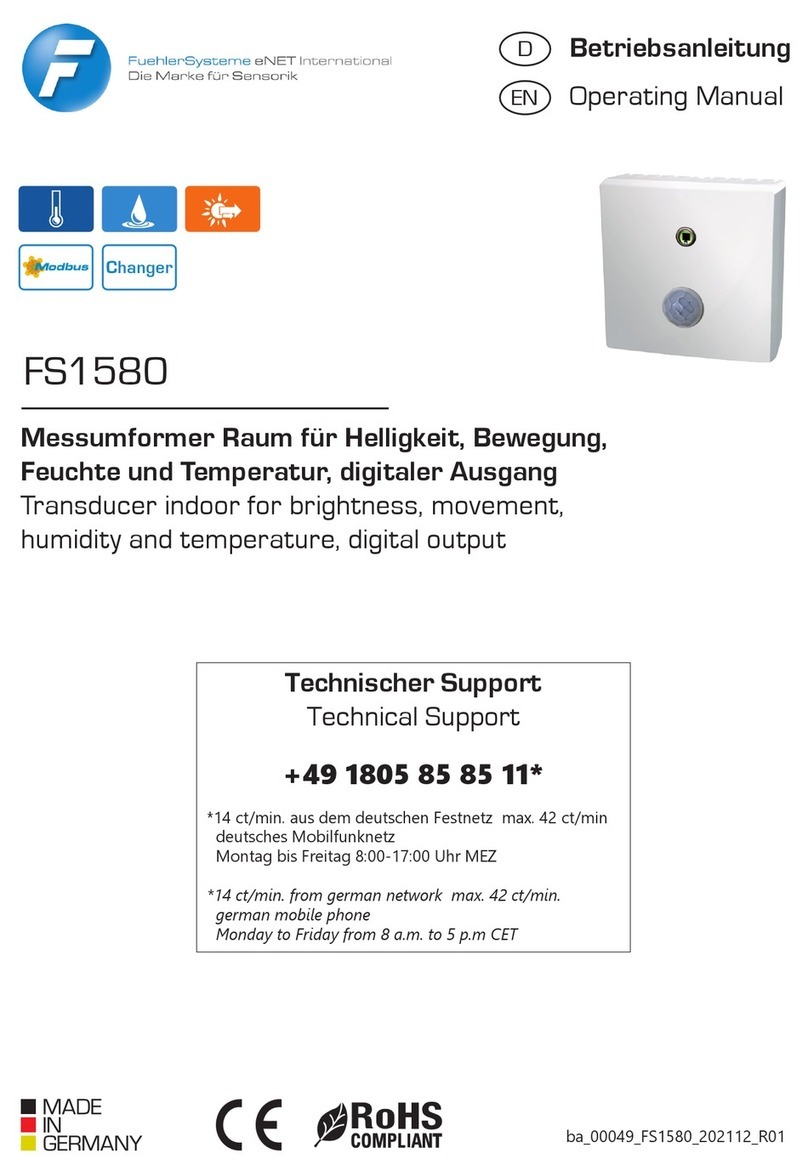
FuehlerSysteme
FuehlerSysteme FS1580 operating manual
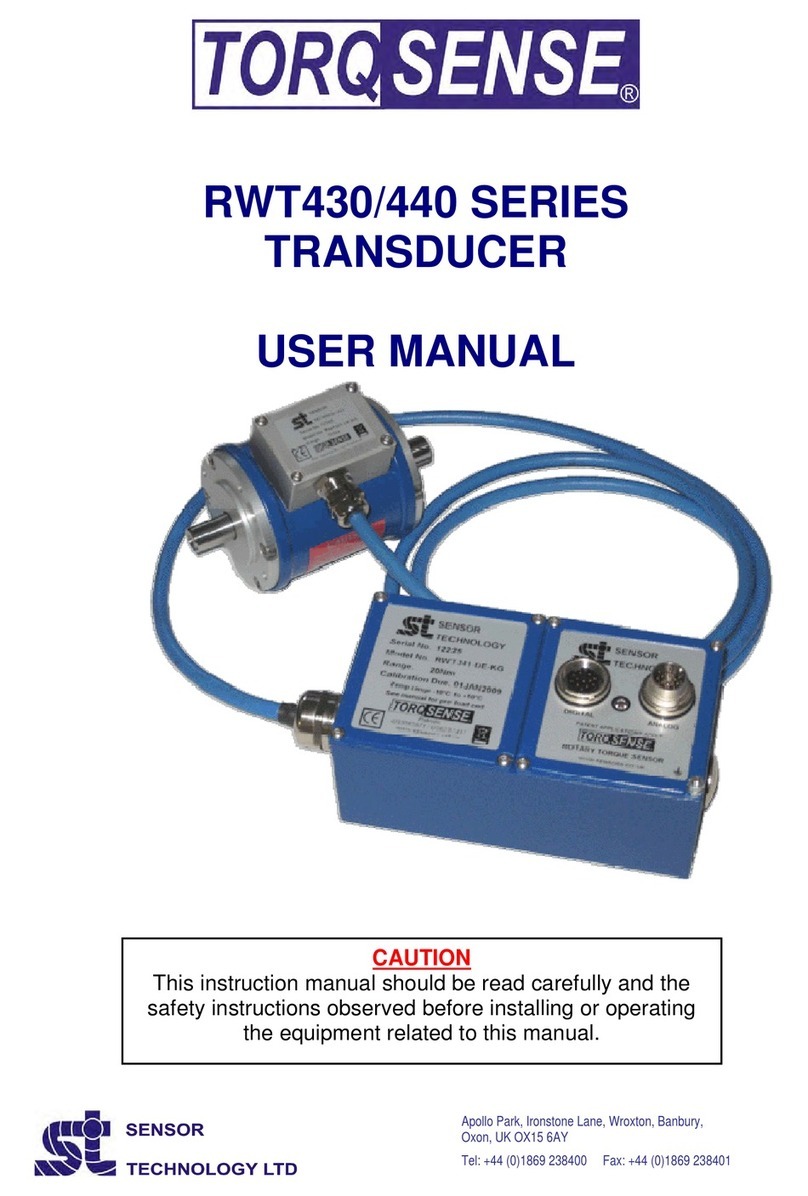
Sensor Technology
Sensor Technology TorqSense RWT430 Series user manual

Camille Bauer
Camille Bauer SINEAX F 535 operating instructions
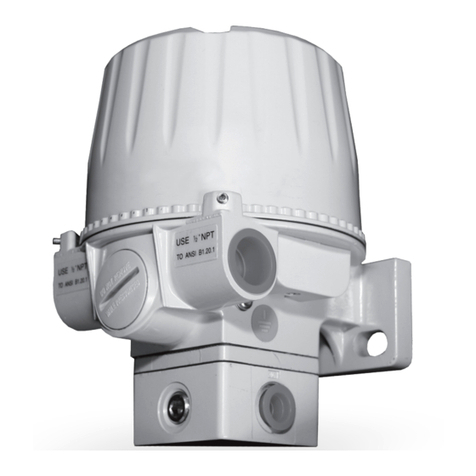
GE Oil & Gas
GE Oil & Gas 4411 instruction manual
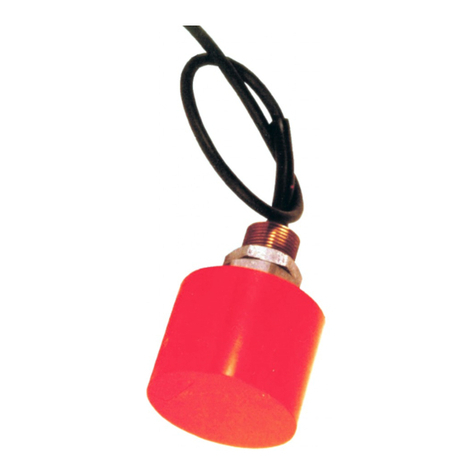
Simrad
Simrad 710-36E - REV E datasheet

Angstrom
Angstrom ALFT10S-150 Ambienti quick start guide
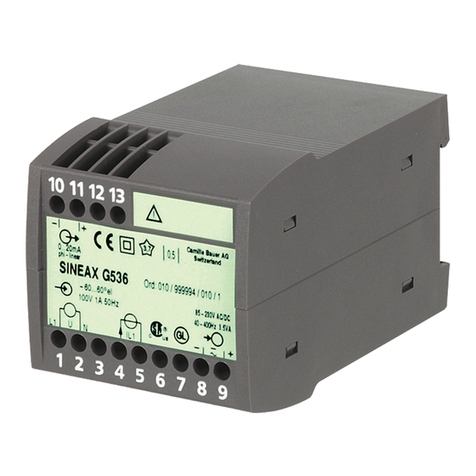
Camille Bauer
Camille Bauer SINEAX G536 operating instructions

Ultrasound Technologies
Ultrasound Technologies Fetatrack 310 Service manual
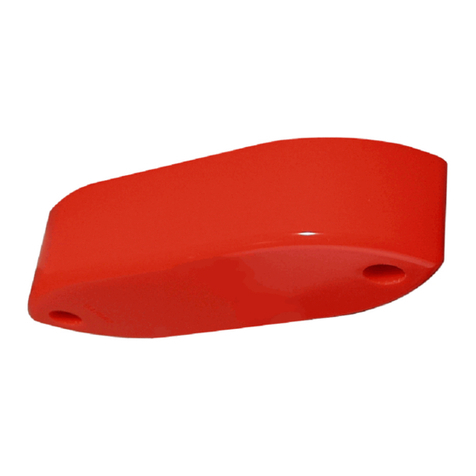
Simrad
Simrad 50-200 COMBI C - REV D installation manual
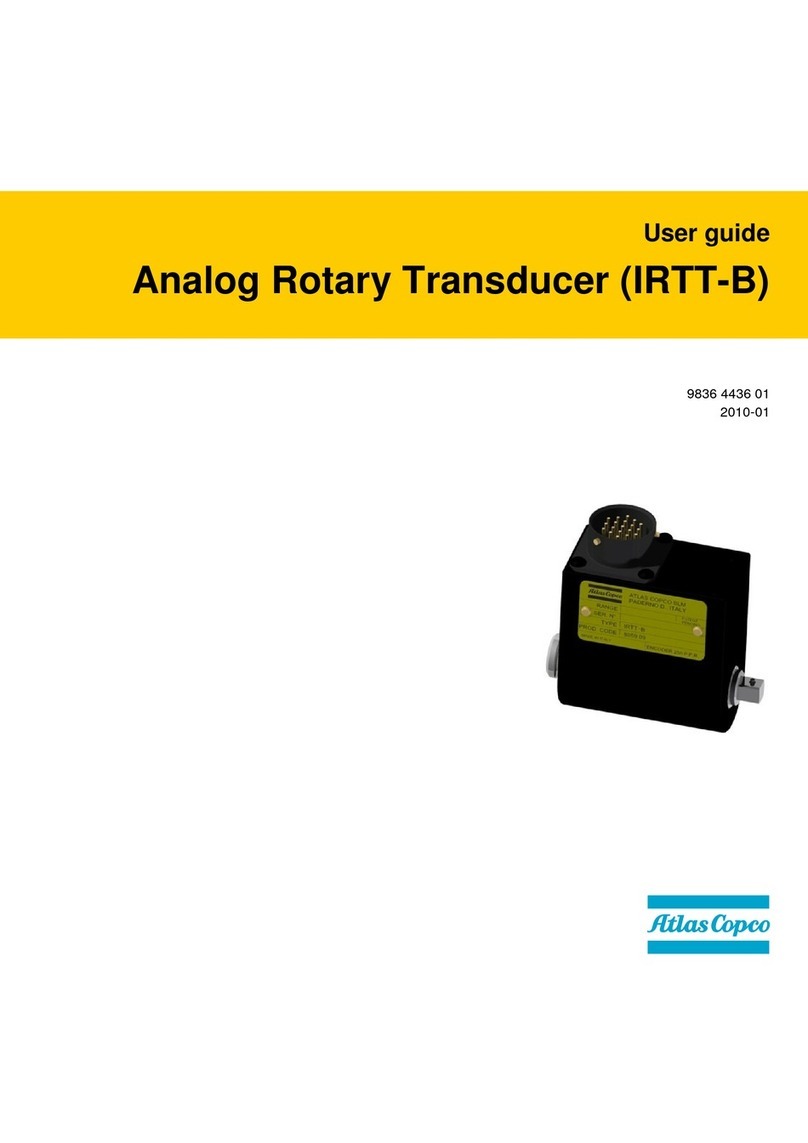
Atlas Copco
Atlas Copco IRTT-B 1A-I06 user guide
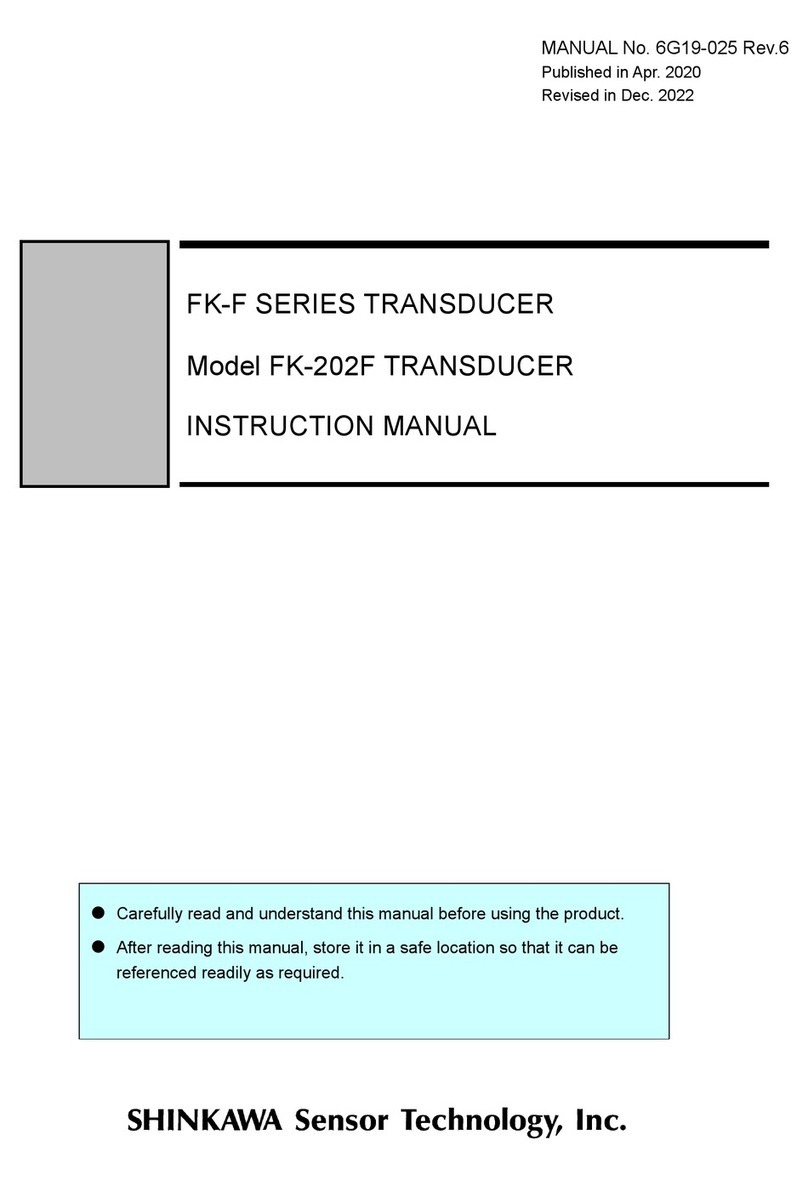
Shinkawa
Shinkawa FK F Series instruction manual
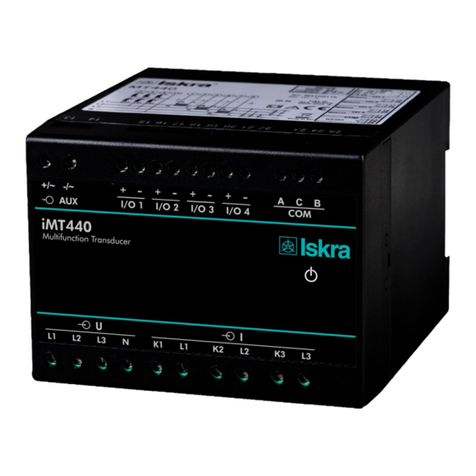
Iskra
Iskra iMT440 user manual
